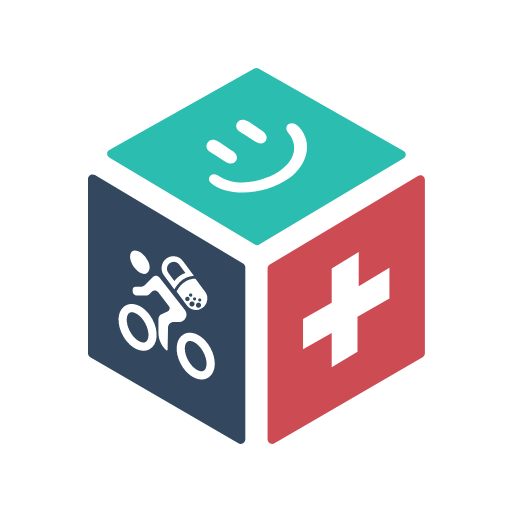Generic Information
TOLFENAMIC ACID
Tolfenamic acid is used specifically for relieving the pain of migraine headaches and also recommended for use as an analgesic in post-operative pain, and fever.
Drugs used for Rheumatoid Arthritis, Non-steroidal Anti-inflammatory Drugs (NSAIDs), Other drugs for migraine
Rheumatoid arthritis is an autoimmune disease characterized by a dysregulation of pro-inflammatory cytokines including IL7, IL15, IL21, IL6, IFN-alpha, and IFN-beta. (3) Cytokines signalling results in tissue inflammation and joint damage by stimulating the recruitment and activation of immune cells via the janus kinase signalling pathway. Tofacitinib is a partial and reversible janus kinase (JAK) inihibitor that will prevent the body from responding to cytokine signals. By inhibiting JAKs, tofacitinib prevents the phosphorylation and activation of STATs. The JAK-STAT signalling pathway is involved in the transcription of cells involved in hematopoiesis, and immune cell function. Tofacitinib works therapeutically by inhibiting the JAK-STAT pathway to decrease the inflammatory response. However, there is evidence to suggest that it may also achieve efficacy via other pathways as well.
Acute migraine attacks: Adult: 200 mg when 1st symptoms appear may be repeated once after 1-2 hr. Renal impairment: Dose adjustments may be needed. Severe: Avoid. Mild to moderate pain: Children: A pediatric dosage regimen has not yet been established. Adult: 100-200 mg tid. Renal impairment: Dose adjustments may be needed. Severe: Avoid. It should be taken with food. Take water/ or immediately after meals. Preclinical safety data: The therapeutic index for Tolfenamic acid is high, and gastrointestinal ulceration and kidney changes have only been seen with oral doses approximately 6-10 times the maximum therapeutic dose recommended for tolfenamic acid. Special Precautions: Asthma, bronchospasm, bleeding disorders, cardiovascular diseases, history of peptic ulceration, hypertension, patients with infections, liver, cardiac, or renal function impairment. Increase water intake or dose reduction to reduce dysuria. CHF; elderly; lactation.
The rate of absorption of Tolfenamic acid increases with metoclopramide and magnesium hydroxide and decreases with aluminium hydroxide. Risk of bleeding with anticoagulants and other NSAIDs increases when use with Tolfenamic acid. It decreases antihypertensive response to loop diuretics, 8-blockers and ACE inhibitors. Co-administration increases plasma concentrations of lithium, methotrexate and cardiac glycosides. It also increases the risk of nephrotoxicity with ACE inhibitors, ciclosporin, tacrolimus or diuretics.
Not to be used in- Children and adolescents under 18 years of age People with an active peptic ulcer or bleeding in the gut Severe heart failure, severe kidney failure, Severe liver failure People taking other NSAIDs, including COX-2 inhibitors This medicine should not be used if you are allergic to one or any of its ingredients. Please inform your doctor if you have previously experienced such an allergy. If you feel you have experienced an allergic reaction, stop using this medicine and inform your doctor or pharmacist immediately
Dysuria especially in males; diarrhoea, nausea, epigastric pain, vomiting, dyspepsia, erythema, headache. Tremor, euphoria, fatigue, pulmonary infiltration, & haematuria. Potentially Fatal: Blood dyscrasias, toxic hepatitis.
Pregnancy: This medicine is not recommended for use during pregnancy unless considered essential by your doctor. This is particularly important in the first and third trimesters. Not to be given during the third trimester of pregnancy. Lactation: In limited studies so far available, NSAIDs can appear in breast milk in very low concentrations. NSAIDs should, if possible, be avoided when breastfeeding.
Symptoms include headache, nausea, vomiting, epigastric pain, gastrointestinal bleeding, diarrhoea, excitation, coma, drowsiness, dizziness, tinnitus, fainting, and convulsions. In cases of significant poisoning acute renal failure and liver damage are possible. Patients should be treated symptomatically as required.
As is the case with other NSAIDs, tolfenamic acid should be used with caution in patients with a history of gastrointestinal ulceration, or impaired liver or kidney function. The therapeutic index for tolfenamic acid is high, and gastrointestinal ulceration and kidney changes have only been seen with oral doses approximately 6-10 times the maximum therapeutic dose recommended for tolfenamic acid. In human volunteers, tolfenamic acid did not affect renal function.
Store in a cool and dry place. Keep out of reach of children
